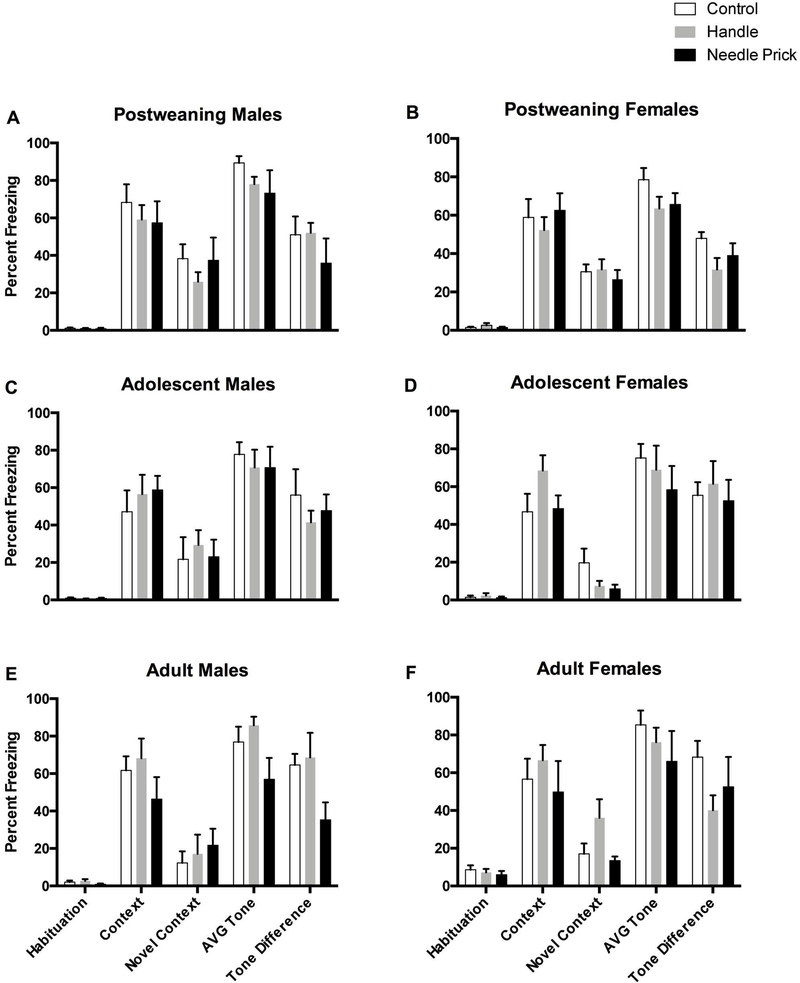Figure 3.
Percent freezing for rats on the 5 freezing variables (Habituation, Context, Novel Context, Average Tone, and Tone Difference Scores). Top two panels represent post-weaning rats in the control (N=6M, 6F), handle (N=7M, 9F), and needle prick (N=5M, 8F) groups. Adolescent rats are represented in the middle two panels in the control (N=7M, 5F), handle (N=10M, 7F), and needle prick (N=7M, 7F) groups. Adult rats are depicted on the bottom two panels in the control (N=5M 7F), handle (N=7M, 8F), and needle prick (N=8M, 5F) groups. These data demonstrate that the younger rats show greater freezing to the novel context,suggesting greater contextual generalization. There was also a significant effect of needle pricks on auditory freezing which is observed better in Figures 2 and 4.

